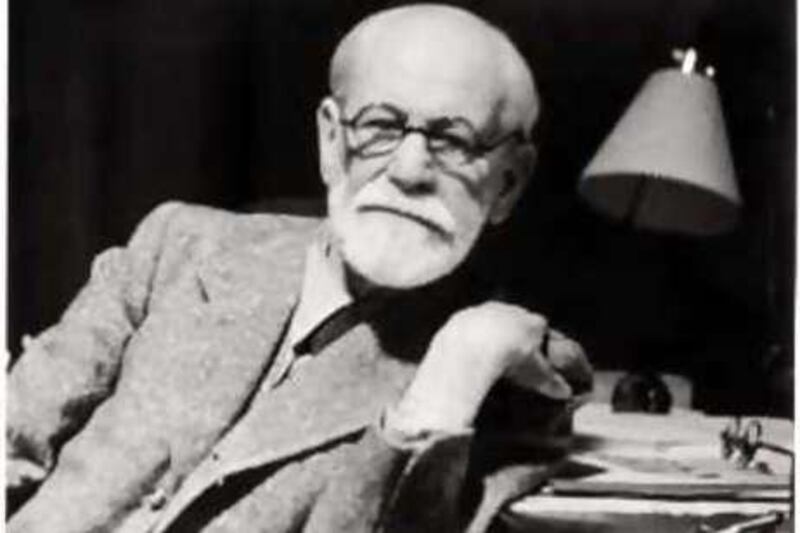Since his death almost 70 years ago, the intellectual stock of Sigmund Freud has dived to junk-bond status. His relentless focus on sexuality and grand claims for the analysis of dreams now seem almost as pathological as the conditions he claimed to treat. Yet one of Freud's obsessions has avoided the same fall from grace - his celebrated proposal that we are not masters of our own mind. Once dismissed as untestable pseudoscience, his claim for the central role of the unconscious in human actions is now the focus of intense research by experimental psychologists, as shown in a new collection of essays called Frontiers of Consciousness, published by Oxford University Press.
Despite its long association with Freud, the notion of the unconscious mind has a venerable history. As long ago as the fourth century AD Augustine of Hippo, the philosopher, reflected the experience of countless meditators by declaring "I cannot grasp all I am". Nor was Freud the first to try to demonstrate the existence of the unconscious: credit for that goes to the French psychiatrist Pierre Janet, whose pioneering analysis of interviews with patients was conveniently played down by Freud.
Yet while his technique of psychoanalysis has been widely criticised, Freud was a victim of being ahead of his time. As he himself noted, the technology available in his day was simply too crude to investigate the nature of the unconscious. Arguably his principal achievement was to keep the notion of the unconscious alive long enough for the development of the right tools for the job. Over the last decade or so, brain scanning technology has revealed a wealth of evidence for the reality of the unconscious. It has shown, for example, how tricky tasks that demand all our concentration become progressively more "unconscious" as we practise them, with activity in areas of the brain used to co-ordinate complex tasks rapidly diminishing.
Brain scans have shown that even the brains of coma patients light up in recognition of photographs of familiar faces, despite the complete absence of conscious activity. In the new collection of essays, Professor Joseph LeDoux of New York University describes how scanning is now revealing the role of the unconscious in such basic emotions as fear. As he points out, many people have noticed their heart pounding before they become conscious of the threat responsible for their fear. Experiments have shown that people shown extremely brief "subliminal" images of threatening situations experience fear, without knowing why. More impressive still, patients with brain damage that prevents them from consciously seeing objects still report feeling fearful when shown threatening images - as their unconscious still picks up the warning signs.
According to Prof LeDoux, a region of the brain known as the amygdala appears to be the seat of this unconscious brain activity. Using brain scanning, researchers have been shown that the amygdala is capable of assessing images before we become consciously aware of what is going on. Freud would doubtless have been fascinated by this hard evidence for the reality of the unconscious. But he may well have been as disturbed as his 21st century counterparts by the mounting evidence that our sense of free will is an illusion created by the unconscious.
In a recent experiment, researchers at the University of the Mediterranean, Marseille, asked volunteers to walk on a treadmill, reporting any change they felt in the resistance of the treadmill, and altering their stride to maintain their speed. The team found that the walkers altered their walking patterns about two seconds after the resistance was changed - but did not report being aware of making the change for another four seconds. Their unconscious minds appeared to have made the decision to act first, and only later did their conscious minds become aware of the outcome.
Hans Kornhuber, the German neurologist, set up an experiment to measure the time delay involved in consciously deciding to move a finger, and actually making the movement. The speed of nerve impulses suggested the time delay would be around 200 milliseconds, similar to that of reflex actions. Yet the researchers found the delay was much longer. While consistent with the idea that conscious thought involves a lot of processing, the researchers found something else as well: the brain activity began around 800 milliseconds before people claimed to make the conscious decision to move their finger.
This is a startling discovery, with disturbing implications for the long-cherished notion of free will. For it implies that our actions are not initiated by our conscious mind at all, but by the unconscious brain activity taking place out of our perception. Another perplexing discovery was made a few years later by Professor Benjamin Libet and colleagues at the University of California. They were performing experiments in which patients had their brains directly stimulated electrically. The researchers expected to find a short delay between applying the stimulus and conscious detection. Yet as with Kornhuber's experiment, the researchers found a substantial delay, of around 500 ms. They also found that the brain seems to "backdate" the conscious response, thus creating the impression there was hardly any delay at all.
As Professor Chris Frith of University College, London describes in his essay in the new book, there is still much debate about what to make of these findings. Some insist they show the primacy of the unconscious mind, and undermine our notion of conscious free will. Others, including Prof Frith, suspect the results point to the existence of a kind of "time illusion", in which our minds can mix up cause and effect.
Whatever the truth, such findings show that Freud's fascination with the unconscious was well-founded. By understanding how it works, we may one day learn to control it - and finally become the masters of the 1.4kg of nerve-packed tissue inside our skulls. Robert Matthews is Visiting Reader in Science at Aston University, Birmingham, England






